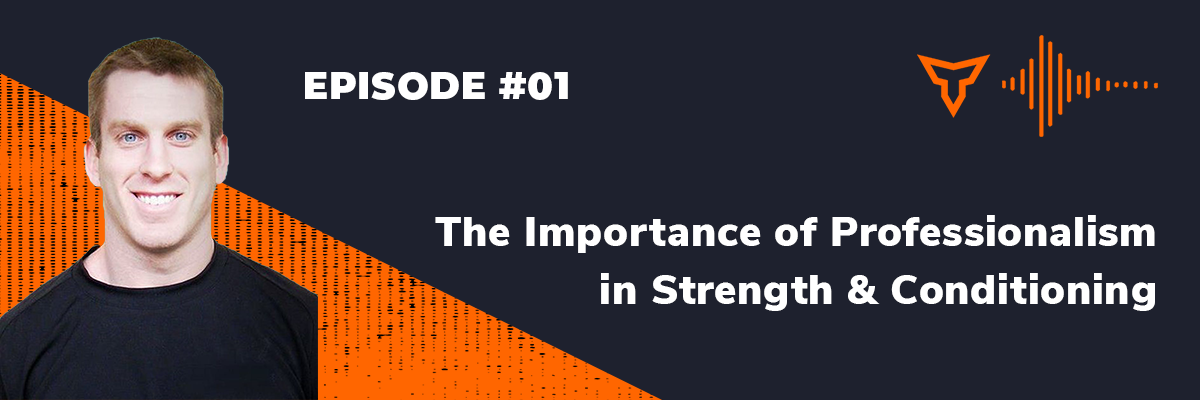5 Steps To Create a System For Staff Development
The world of athletic performance is changing fast. Do you remember a time when the job of the director was to make decisions and operate as a command center with decision-making authority over the department?
I certainly do. But, those days are long gone.
Today, the modern director’s job is to plant the seeds of collaboration; to harvest the collective ideas in a personal and caring way from the top to the bottom, and from the left to the right, of the organizational flow chart. Fundamentally, we rely on directors and leadership personnel to unite the staff and strategically position personnel to improve or optimize performance.
In 2018, TeamBuildr requisitioned me to write The Strength Coach's Ultimate Guide to Hiring. Now, two years later, I am ready to share the long-overdue follow-up - Creating a System for Staff Development.
Improving staff can come by way of three options:
- Onboarding new personnel: Either internal or external and may involve cross-pollination between departments (mathematics, exercise science, medicine, etc.)
- Restructuring your current staff to meet new, increasing, or projected demands
- Strategic development of your current staff
This five-step system will provide a framework directed toward uniting the high-performance staff by strategically developing and positioning personnel while promoting the engagement of key stakeholders.
Step 1: Assess Needs
A needs assessment helps us determine whether there is a gap between the actual and the desired performance and if so, what that gap is.
DEPARTMENT
There are many tools available to assess the various aspects of an organization or department. Regardless of the tool, I recommend the staff WORK TOGETHER to answer the following questions about the department:
- What is the department is trying to accomplish?
- What is the history of training and development within the department?
- Where does our department excel?
- What needs will be addressed by the development system?
- Has there been any recent policy or procedural changes?
- What resources, both internal and external, are available for training?
- Do we have staff who can serve as subject matter experts?
- What are the required knowledge, skills, and abilities needed to meet new, increasing, or projected demands?
- Review applicable job descriptions and organizational charts.
INDIVIDUAL
While working together to unravel the departmental needs assessment, the staff should be formulating a more clear picture of the individual employee’s needs, desires, and dreams.
Each staff member should conduct a self-assessment. In this way, each member becomes more valuable and more satisfied with their lives at work. Our closest relationships are excellent sources of information about work interests, values, and abilities. I recommend completing the following:
- Get 2-5 colleagues and ask these 2 questions:
- What is my reputation within the athletic performance department and/or organization?
- What am I best known for?
- Get 4-6 people, across a spectrum of relationships and ask these 6 questions:
- What two words best describe me?
- What would be the ideal job for me?
- What seems to make me most fulfilled and excited?
- What work should I stay away from? Why?
- What aspects of myself should I change to become more successful?
- What should I never change?
The departmental and individual needs assessments, when used collectively allows us to later set the training objectives by answering three very basic questions:
- Who, if anyone, needs training?
- Who, if anyone, desires additional training?
- What training is needed?
The assessment of training needs will result in a combination of training approaches that are somewhat individualized for each staff member. The development effort attempts to address the individual needs of each staff member by identifying any gap between current and future abilities, values and interests, and career aspirations.
Step 2: Set Objectives
Following the completion of the needs assessment, and after a determination is made that training can enhance an individual’s skill set and help the staff meet new, increasing, or projected demands, learning objectives are written. Learning objectives will reflect the gap(s) identified and specify exactly what area(s) the staff member needs to be able to perform, know, or demonstrate skill in upon completion of training.
The following guidelines may help when drafting learning objectives:
- Align the learning objective to the business goals.
- Keep them direct and to the point.
- Follow the goal acronym S.M.A.R.T.
- Specific
- Measurable
- Achievable
- Relevant
- Time-Based
- Use Bloom’s Taxonomy to direct action and state clear learning outcomes (image right).
Well written training objectives have three major benefits:
- They help determine which methods are appropriate by focusing on the areas of performance that needs to change.
- They clarify what is to be expected of both the trainer (director) and the staff member.
- They provide a basis for post-training evaluation.
Step 3: Select A Methodology
After the needs assessment has identified a performance gap or goal, and after objectives have been set, the director and employee are ready to design the training program. Training techniques, outsourced or conducted internally, may be used while employees are either off the job or on the job. When choosing a training method the learning climate of the workplace needs to be taken into account.
“Mentoring begins with a strong corporate culture that everyone has something to teach, and everyone has something to learn.”
A commonly used approach by training directors is that of the 70-20-10 model for learning development. Developed in the 1980s, this model can provide great value when allocating time to learning activities. It states:
- 70% of training should be devoted to hands-on experience
- Discover and/or refine new job skills, make decisions, address change, interact with key stakeholders
- 20% of training should be devoted to learning from others
- Social learning, coaching, mentoring, interaction with peers
- 10% of training should be devoted to coursework
- Reading, writing, lecture, educational events, etc.
OFF THE JOB TRAINING
Off the job training includes any form of training performed away from the employee's immediate work area, either:
- In-house programs that are conducted within the organization's training facility, by training specialists, external consultants, or a mix.
- Off-site programs are held elsewhere and sponsored by an educational institution, professional association, government organization, or training consultant.
ON THE JOB TRAINING
On the job techniques typically involve job instruction given by an employee's supervisor or an experienced co-worker. It is important to denote that directors and those in oversight positions also learn by doing. On the job methodologies include:
- Job rotation and lateral promotion
- Job instruction training
- Apprentice training
- Committee assignments
- Coaching and mentoring
Step 4: Conduct Training
In the fourth step in the training system, the training of the employee is conducted. At this point, all methodologies should be finalized and training should be coordinated and scheduled.
All facilities, equipment, tools, and personnel should be aligned with the desired training outcome(s). The training program is launched, promoted, and conducted; during which time the director and/or mentor should be monitoring to ensure the program is effective (see level one below).
Step 5: Evaluate Training
The fifth step in the training model is evaluation. A comprehensive evaluation strategy relies on both subjective and objective evaluation. Leadership and development expert, James Kirkpatrick, has proposed a 4-level platform for evaluating training effectiveness:
LEVEL 1: REACTION
- This level aims to decipher the experience of learning. It is important that the learner feels the education is valuable, worth their time, accommodates their personal learning preferences, is engaging, and finally, supports the stated learning objective(s). Level one evaluation can come in the form of a feedback form, interview, or focus group.
LEVEL 2: LEARNING
- Level two will evaluate the knowledge acquired by the learner. Evaluation from this level can come in the form of a performance test, interview, or focus group and should start with the stated learning objectives. Trainees should be able to describe or verbalize newly developed skills, enhanced subject matter knowledge, a connected attitude, or perhaps renewed confidence and commitment.
LEVEL 3: BEHAVIOR
- At this level, the director will observe the application of knowledge in the environment. It will be important to encourage, reinforce, and reward the desired learning outcome while also considering and obstructions that might inhibit the learner from displaying their new-found knowledge or skillset.
LEVEL 4: RESULTS
- Level four will evaluate the effect on the environment and will come by measuring the productivity, savings, quality, and transformation of the department, learner, or the athlete group. Identify which outcomes are most closely linked to the training plan and then track these over a long period.
Whether part of a department audit or the renewed purpose for personnel development, as a director or leader, a career ladder (or lattice) should be provided for each staff member you hope to retain. Be especially aware of the high-achiever who may feel boredom or perhaps, underutilized; professional development opportunities and professional planning will often reinvigorate these individuals.
Do not allow good individuals to be stuck on a career plateau; if you do, you may lose them.
Finally, make sure everyone who wants one, has a suitable mentor. The investment in staff development on the front end is worth the amount of work to execute properly. It is sure to save you tenfold financially, free up time in candidate searches and off the cuff instruction, while at the same time deeply enhancing the product you and your staff deliver to your athletes.
Subscribe to our blog
Subscribe to receive the latest blog posts to your inbox every week.
Related posts
.png?width=720&height=400&name=Blog%20Header%20Image%20(1).png)
Making Staff Development a Priority

A Strength Coaches Guide to Getting the Edge in Leadership
%201.png?width=720&height=400&name=Sport%20Coach%20(4)%201.png)

